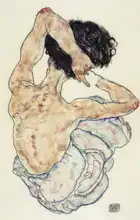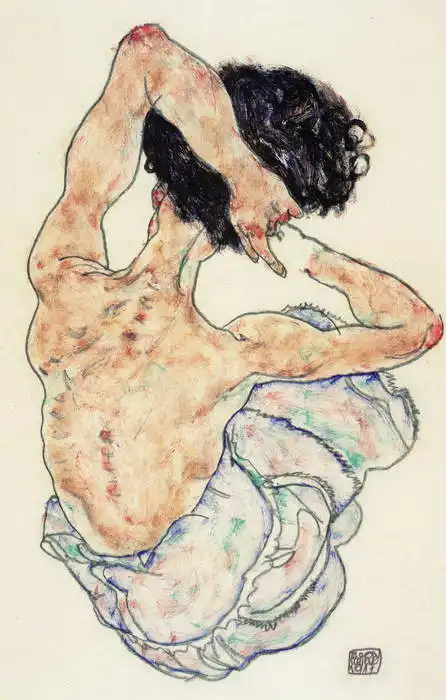About this finishing
Print. The image is printed on the top quality 10-ink HP Z9PS printer on HP matte 270 g / m2 paper. You can choose any size to an accuracy of 1 cm. A margin of 5 cm around the image is added to the size of the motif.


You can find a detailed description about our finishings
here.
Sitting nude
Date:
1917"Seated Nude" is an oil painting by the Austrian artist
Egon Schiele , one of the leading representatives of
Expressionism . The painting was created around 1917, during the period when Schiele was developing his unique artistic style, which was characterized by the deformation of figures and a strong view of the human body.
< br> The painting depicts a
The nude female figure sitting on a low stool or stool. The female figure is the large central motif of the painting. The figure is depicted with characteristic expressionist features such as an elongated body, distorted shapes and sharply defined lines. Schiele often used bodily deformations and distortion to convey the character's emotional or psychological state. The color palette of the image is limited and austere, with gray, blue and brown tones predominating. This color restriction creates an impression of melancholy and introspection. The figure has her gaze fixed downwards and her hands resting on her thighs. Her position and the expression on the face can evoke a feeling of melancholy, reflection or inner reflection.
The painting "Seated Nude" is a typical example of Schiele's work, which is devoted to the human body and emotional states. The artist was known for tackling dark and controversial subjects and often expressed his own mental constancy and desires in his paintings.
Schiele painted picture Sitting nude in 1917. Prevailing color of this fine art print is brown and its shape is portrait. This image is printed on demand - you can choose material, size and finishing.
Egon Schiele (1890-1918). Unconventional Viennese artist representing a significant milestone Viennese painting. He quickly broke away from the German movement of new art (Jugendstil) and began to paint in his typical style, with agonizing existential passion for the human body. He painted openly with reference to human sexuality (the images fit into the era when Freud was formulating his theories). Schiele’s paintings are dark, aggressive, and unusual. However, they are thoughtful, excite emotions, and comprise of fascinating drawing and composition. Schiele was tortured by existence, sexuality and the realities of life. His fame grew during his life, although it was very short: after World War I, his wife and child died to typhoid fever and Schiele died after a short time himself.


